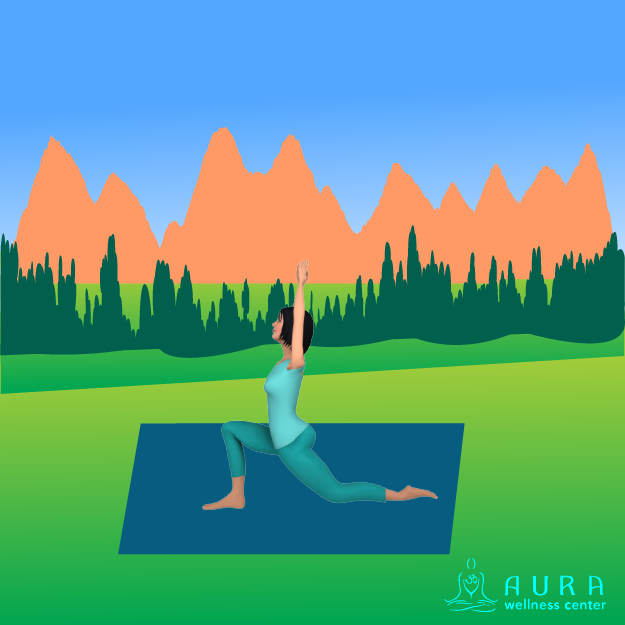
A very effective way of improving student safety during a class is by modifying yoga poses and using appropriate props when needed. By modifying Yoga postures and using props when necessary, you will help your students to move in and out of poses that are challenging, in a safe and effective manner. Using well-placed props and modifying postures will also allow you to teach challenging multi-level Yoga classes in a safe manner. Another benefit to modifying Yoga poses for your students is that the repertoire of postures that your students can practice safely will be greatly expanded. For instance, many beginning students may have difficulty fully extending into Triangle Pose. If this is the case for a number of your students, by providing those students with a block to help support the correct alignment of the spine in Triangle Pose, you will be enabling them to benefit from this fundamental Yoga posture, while still maintaining the safety and integrity of the pose itself.
When you comfortably master the art of modifying Yoga poses, in accordance with your students’ ability levels, you will find that you are able to safely teach Yoga classes to a mixed level students in a variety of environments. This skill is particularly important if you are teaching Yoga classes to a group of students who drop into class on occasion, and who may not have a regular practice established at home. For instance, if you are teaching Yoga classes at a local community center or at a health club, you may find that a number of your students only drop in sporadically, which may limit their ability to practice the postures correctly without the use of modifications and props. When you learn the art of modifying Yoga poses and using props, you will be able to safely lead your students through a challenging sequence of asanas. For example, practicing back bending postures correctly can be very challenging for most beginning students. This is particularly true if your students are not very physically fit, or if your students are quite athletic and the front side of their torso, shoulders and legs are very tight. By practicing a modified back bending posture with the use of well-placed props, these students will be able to truly benefit from the expansive and energizing nature of back bending poses, while still maintaining their safety in Yoga class.
* Supported Reclining Goddess Pose
Reclining Goddess Pose is a very effective, gentle back bending pose that most Yoga students are able to perform safely. By offering your students the support of a bolster or rolled blanket underneath their thoracic spine, you will be further supporting their comfort and safety, while they practiced this restorative back bending posture. Before leading your students through the practice of Supported Reclining Goddess Pose, make sure that you have enough bolsters or blankets available for each student to use while they practice the pose.
Supported Reclining Goddess Pose is usually practiced towards the end portion of a Yoga class, and often just prior to Shavasana. When you are ready to lead your students through the practice of Supported Reclining Goddess Pose, ask your students to place a bolster or rolled blanket near their mat, if they are using the support of a prop today. As they lie down, have them place the bolster or blanket horizontally across the top of their mat and just underneath their shoulder blades, so that the expansion of their heart is more fully supported in a comfortable fashion.
Next, instruct your students to place their legs in a diamond position with the soles of their feet gently pressing against each other, and then ask your students to lie back on their mats with their arms comfortably at their sides and their palms open to the sky. Have your students practice Supported Reclining Goddess Pose for a full five minutes before asking them to roll to their right side, and then gently push themselves up into Easy Seat. This gentle back bending Yoga posture will leave your students feeling peaceful, expanded and energized, as they move through the rest of their day or evening.
Virginia Iversen, M.Ed, has been practicing and studying the art of Yoga for over twenty years. She lives in Woodstock, New York, where she works as a writer and an academic support specialist.
To see our selection of Yoga teacher training courses, please visit the following link.
https://www.aurawellnesscenter.com/store/
Are you looking for more information or continuing education?
Subscribe to Our Newsletter for Special Discounts and New Products
Related Resources:
by Leslie Kaminoff and Amy Matthews
52 Essential Principles of Yoga Philosophy to Deepen your Practice
by Rina Jakubowicz.
A Relaxing Way to De-stress, Re-energize, and Find Balance
by: Gail Boorstein Grossman.
YOGA: THE PATH TO HOLISTIC HEALTH
by B.K.S. Iyengar
TEACHING YOGA: Essential Foundations and Techniques
By Mark Stephens

[…] involved. If you try to lead your youngest pupils through intricate sequences with difficult poses, you’re only going to cause unnecessary levels of […]
When a yoga teacher learn the art of modifying Yoga poses and using props, they will be able to safely lead their students through a challenging sequence of asanas. Thank you Virginia Iversen for writing this informative article.